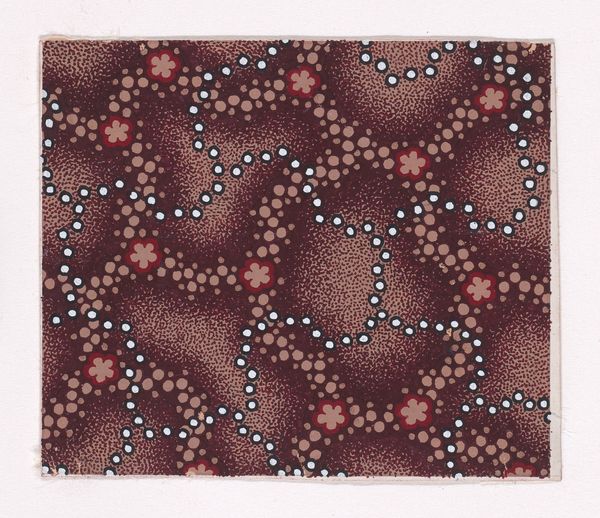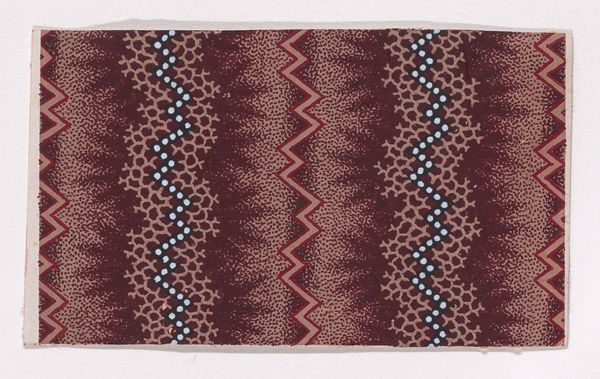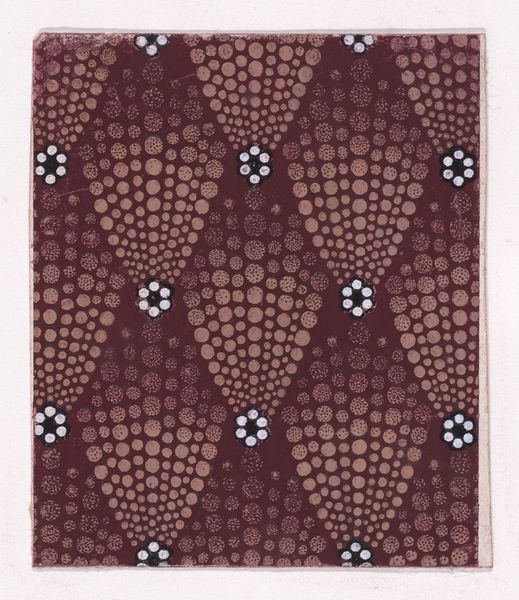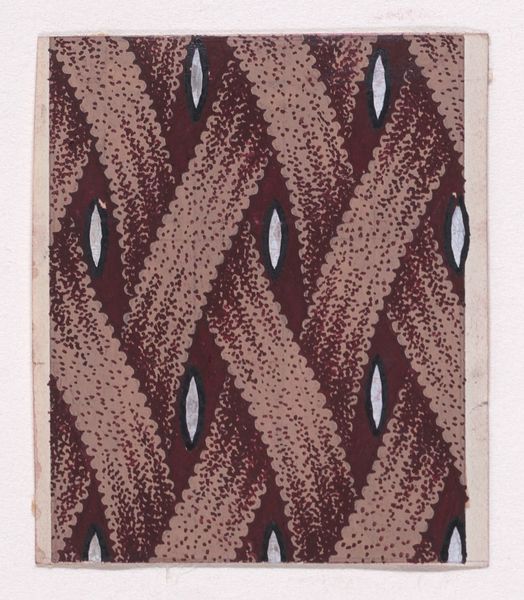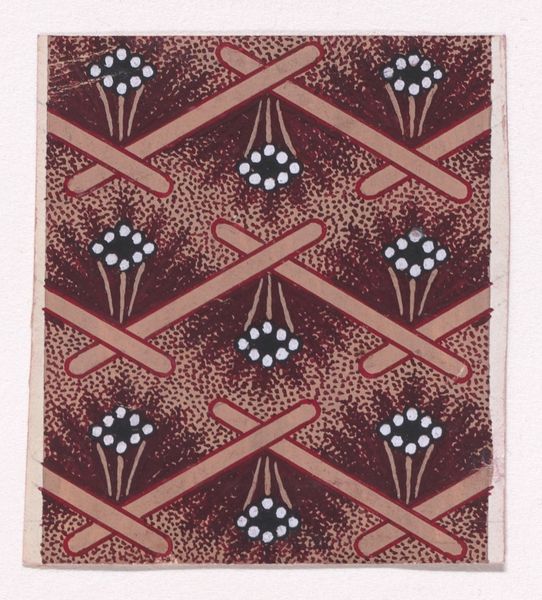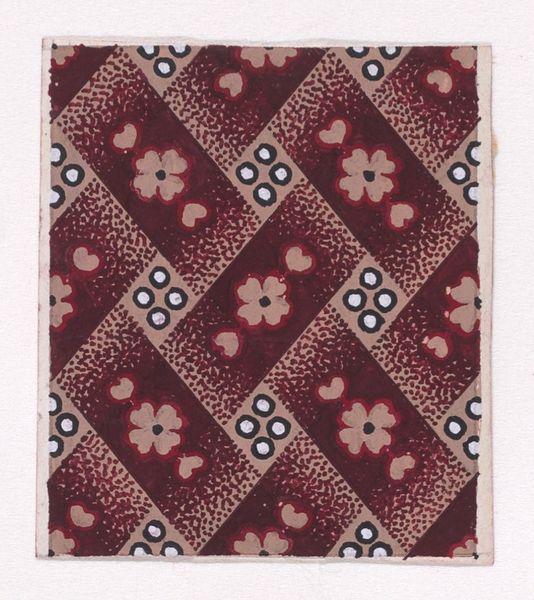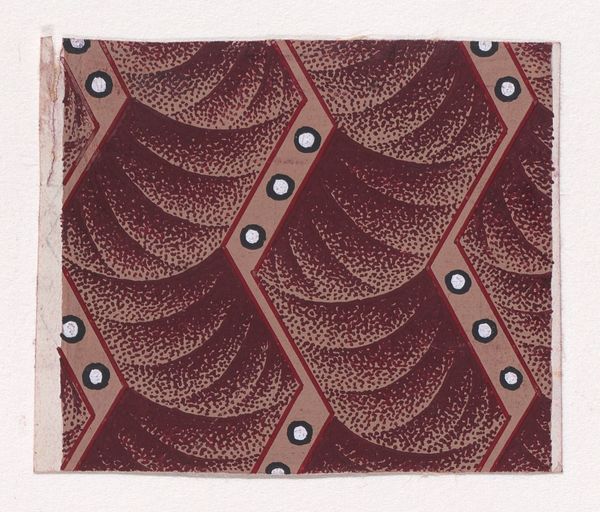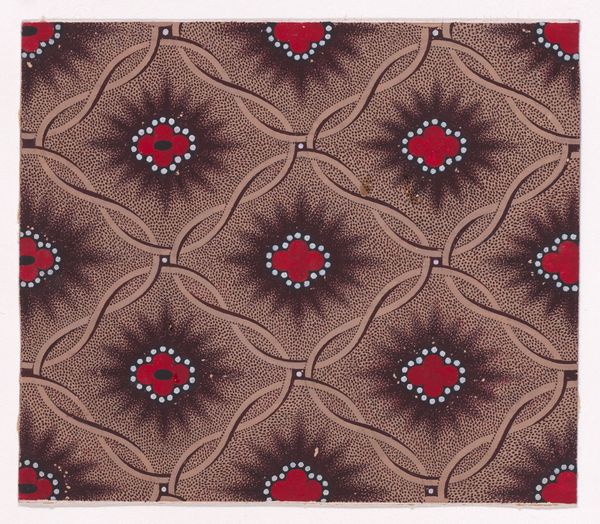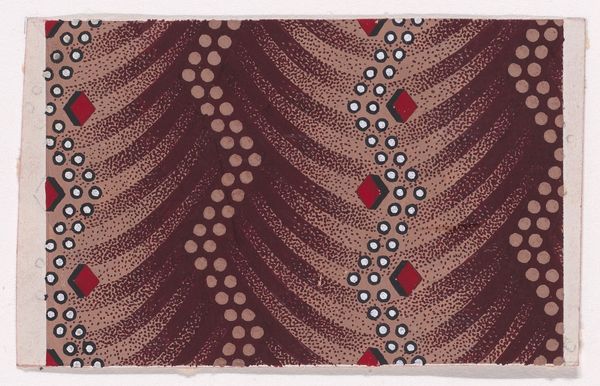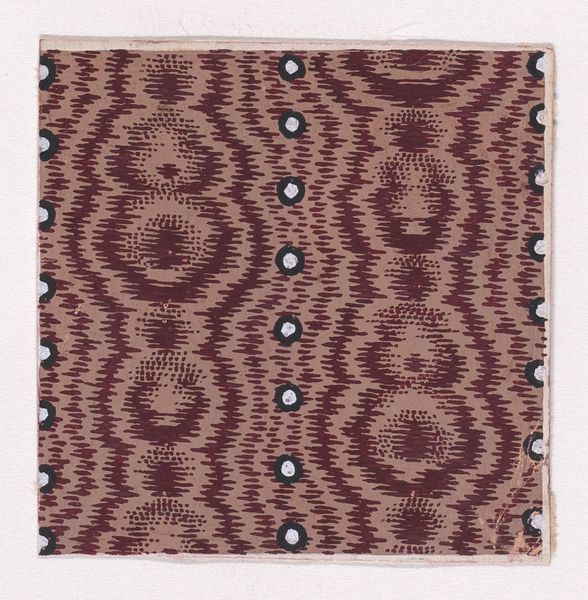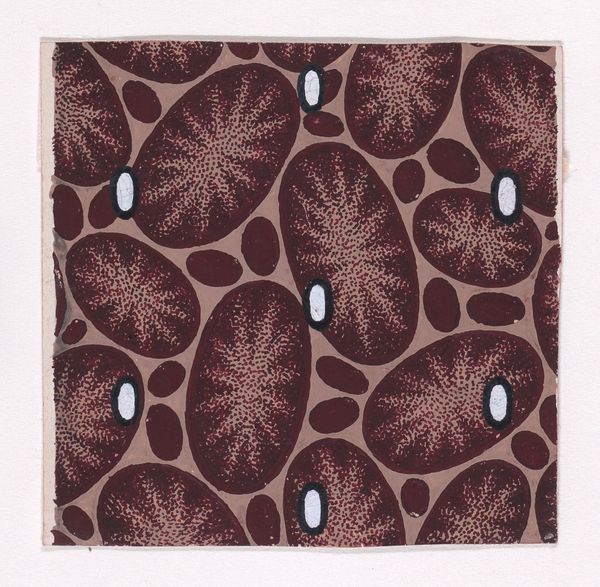
Textile Design with a Tiled Background of Alternating Rectangular Shapes Framed by Ribbons Decorated with Pearls 1840
0:00
0:00
drawing, print, textile
#
drawing
# print
#
pattern
#
textile
#
fashion and textile design
#
geometric
#
pattern repetition
#
textile design
#
decorative-art
Dimensions: Sheet: 2 3/16 × 2 1/2 in. (5.5 × 6.3 cm)
Copyright: Public Domain
Curator: Let's take a look at this intriguing textile design from 1840, currently held here at the Metropolitan Museum. The piece, attributed to an anonymous designer, features a tiled background of alternating rectangular shapes, all framed by ribbons adorned with what appear to be pearls. Editor: Immediately striking! I’m seeing a complex interplay of geometric shapes. There’s something about that deep burgundy color that feels almost opulent, though in a strangely subdued way. I’m also noticing the meticulous detail, which gives the whole piece a very precise, almost mathematical feel. Curator: Absolutely. Consider the processes involved in creating such a design in the 1840s. Each line, each pearl, each textural element of those shapes required considerable handwork, suggesting a significant investment of time and skill from the artisan responsible. Were they working for a specific textile mill or as a freelance designer providing patterns to various manufacturers? Editor: It's that anonymity that gets me thinking. Who was this person? What social class did they belong to? Were they even recognized for their work at the time? These patterns, while seemingly decorative, are deeply embedded in the history of labor, of gendered expectations, of economic disparity. We need to explore who was able to consume these textiles, too, not just who made them. What did it mean to possess and display something like this? Curator: Good points! I wonder about the materials they used as well, the dyes in particular. How readily available was this color, burgundy, in the 1840s, and where might its constituent parts have come from? We might want to cross reference any production records of manufacturers known to trade locally at that time. Editor: And speaking of display, thinking about how textiles like this participated in world building and communicating status is central. What narrative about power and control do these kinds of luxurious textile patterns create within the context of broader colonial structures? Were they mimicking older traditions, or attempting something totally new? Curator: Excellent. I believe that the intersections of materials, labor practices, and markets hold just as much cultural insight. Editor: Agreed! Thinking about design and function intersecting with social factors helps paint a broader and more insightful picture of its context. Curator: Precisely! A richer and nuanced consideration of how we perceive an artwork and its origins. Editor: A perspective accounting for history, for craft, for societal impacts... for art, even beyond the art!
Comments
No comments
Be the first to comment and join the conversation on the ultimate creative platform.
